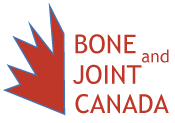
Osteoarthritis and the resultant pain and disability is a significant and pressing problem across the world as identified in a number of international reports. According to the World Health Organization, 9.6% of men and 18.0% of women older than 60 years of age worldwide have symptomatic osteoarthritis (OA), making OA one of the most prevalent chronic diseases. In Canada there are currently more than 4.6 million people living with OA which will rise, within a generation (in 30 years) to more than 10 million (or one in four).
OA is also a major source of pain and severely impacts quality of life. It often affects an individual’s ability to work therefore negatively affecting workplace productivity and the Canadian economy.
OA is a result of wear and tear on the joints and is often related to obesity and previous trauma such as a sports injury. The condition is also influenced by increased longevity as well as lifestyle such as inconsistent or intense levels of physical activity. Osteoarthritis can affect individuals of all age although tends to increase with age therefore is often seen as simply a normal part of aging.
Model of care for Osteoarthritis
BJC has connected with individuals who are working in the management of mild to moderate osteoarthritis through research, through providing a treatment intervention or as a policy maker or patient to identify the barriers and opportunities to improve care in the management of OA in Canada.
The overall goal of BJC is to develop and eventually implement a National Model of Interprofessional Care for Osteoarthritis that is evidence-informed, patient centred and founded on clinical consensus. This model will take into consideration the needs of the healthcare system, local hospitals and clinical team members and other stakeholders and would focus on maximum utilization of health human resources and development of best practice leading to a quality care and improved outcomes including supporting patients in self management which is a key consideration in the management of OA.
To start to develop this model BJC undertook a stakeholder engagement to identify the current status of the management of osteoarthritis across Canada. A meeting was then hosted on May 28th 2014 to review the findings; obtain an overview of current programs for managing OA;; and, to develop strategy for next steps. The report, “Reducing the impact of Osteoarthritis (OA): A report on the prevention and effective management in Canada” provides an overview of the findings and recommendations for a partnered approach to improve OA services in Canada.
Making an impact
Further work was undertaken to identify programs that could be considered as a framework for evidence based hip and knee treatments in Canada and a report identified the strategy. Four programs were identified within Canada and the GLA:D program was identified on an international basis as a program that could improve care for people with hip and knee OA across Canada. Additional information about GLA:D Canada can be found here.
